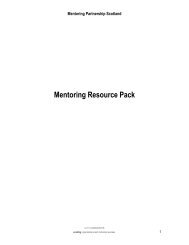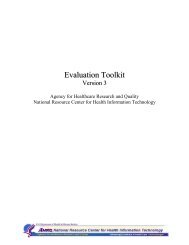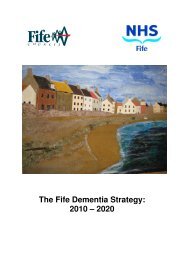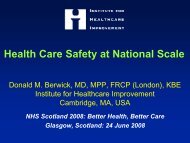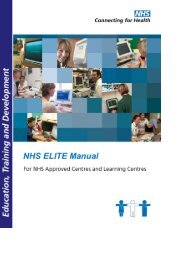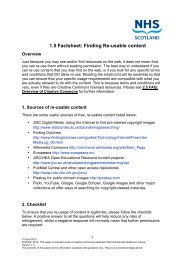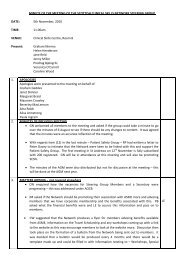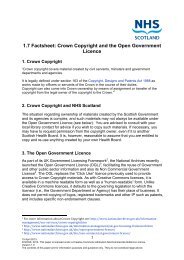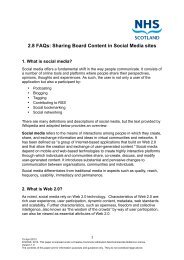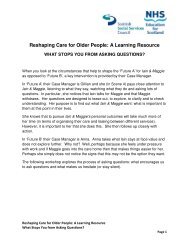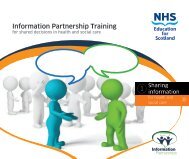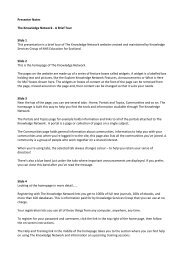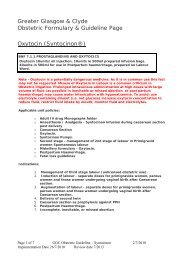ACPCF Infant Guideline - The Knowledge Network
ACPCF Infant Guideline - The Knowledge Network
ACPCF Infant Guideline - The Knowledge Network
You also want an ePaper? Increase the reach of your titles
YUMPU automatically turns print PDFs into web optimized ePapers that Google loves.
Very few studies examine the effects of chest physiotherapy in children<br />
specifically. Desmond et al (1983) evaluated the effects of chest physical<br />
therapy in eight children with CF. 30 Spirometric measures of lung function<br />
were compared from baseline to the end of a three week period without chest<br />
physical therapy with measurements at baseline and the end of a period of<br />
chest physiotherapy on a twice daily basis. <strong>The</strong> authors reported deterioration<br />
in lung function following the three-week period without treatment, which was<br />
reversed with resumption of treatment. <strong>The</strong> immediate effect of four modes of<br />
treatment on lung function in 19 infants was assessed by Maayan et al (1985)<br />
during the first year of life. 31 <strong>The</strong> regimens were applied in a randomised<br />
fashion (inhaled salbutamol, inhaled N-acetyl cysteine, chest physiotherapy;<br />
or a combination of all three). No significant changes in lung volumes were<br />
reported in individual groups but there was a small improvement with the<br />
combined treatment group when compared with inhalation therapy or chest<br />
physiotherapy alone. Both of these studies are now over twenty years old<br />
and therefore relate to a very different population of infants and none were<br />
carried out in asymptomatic infants.<br />
More recently Constantini et al (2003) compared the long term efficacy of PEP<br />
mask versus postural drainage and percussion in infants with CF. <strong>The</strong>re was<br />
no difference in deterioration on chest radiograph or days per year of<br />
antibiotics over a one year period. 32 <strong>The</strong> authors concluded that PEP was<br />
safe to use in early childhood and equally effective as postural drainage and<br />
percussion, although patients and parents preferred PEP. In Sweden<br />
significant changes were made to the physiotherapy management of patients<br />
with CF at the beginning of the 1980s from postural drainage & percussion or<br />
active cycle of breathing techniques (ACBT) to an individually tailored<br />
programme of physical activity, inhalation therapy and airway clearance. 33<br />
Dennersten et al reported the lung function of their patient population (7 years<br />
or older) over a three year period, with a median FEV1 of 93% in the 7-12<br />
year old age group, concluding that their management regimen showed good<br />
results. 34<br />
<strong>The</strong> issue of gastro-oesophageal reflux (GOR) has received much attention<br />
over the past decade. Button et al demonstrated that GOR increased in<br />
physiotherapy regimens which used postural drainage incorporating a head<br />
down tilt when compared with regimens which used a modified postural<br />
drainage (omitting any head down tilt). 35,36 Long term follow up of these<br />
infants also reported fewer respiratory complications in the group receiving<br />
modified postural drainage. 37 Despite weaknesses in these studies (in<br />
particular with regard to subject numbers), the potentially detrimental effects<br />
of postural drainage raised have led many to recommend that the head-down<br />
tipped position should no longer be used in infants during airway clearance<br />
regimens. 38<br />
In a prospective randomised controlled study, Dhouieb et al investigated the<br />
effect of a single airway clearance session (ACBT) compared with a control<br />
group on LCI, FEV1 and FRC in 18 children with CF (12m; 6f), mean age<br />
11.94 years (7-17yrs). 39 <strong>The</strong>re were no statistically significant differences in<br />
any of the outcome measures between the groups. However, the treatment<br />
6



